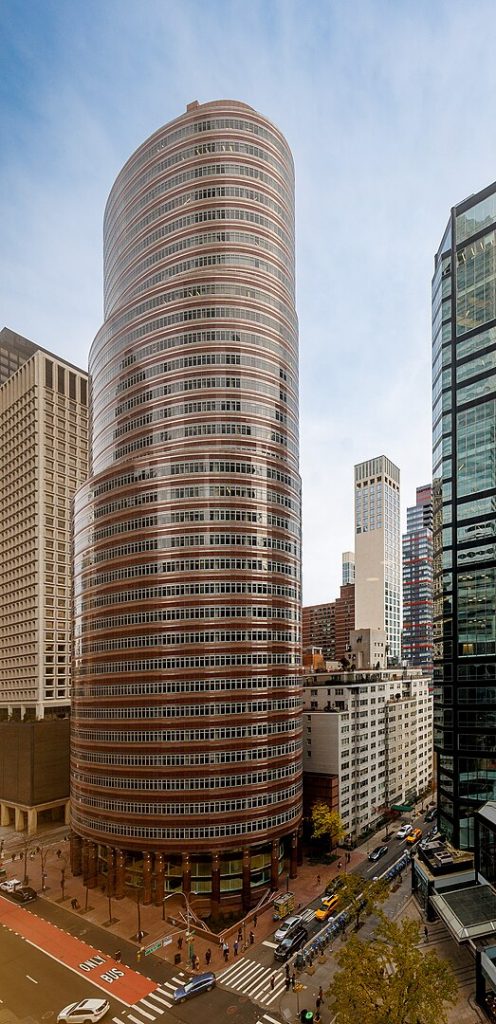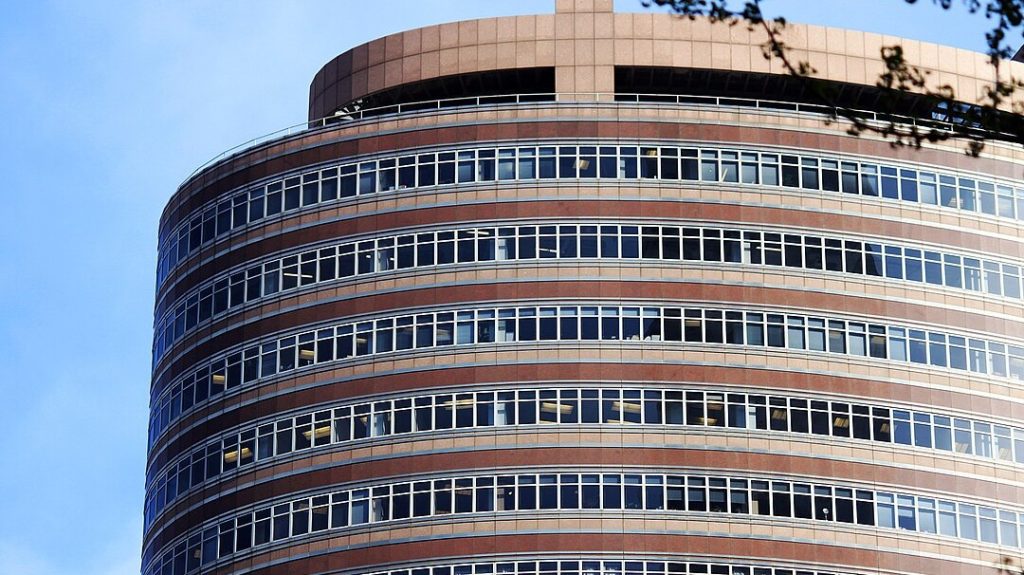The Lipstick Building is a famous building in Manhattan that has captured the attention of onlookers with its distinct architectural design, rich past, and prominent position in Midtown, New York City. This iconic building, created by architects Philip Johnson and John Burgee, is now recognised as a symbol of postmodern architectural innovation in addition to serving as an office space. The rich history, architectural significance, and unique design and aesthetic elements of the Lipstick Building will all be discussed in this essay.
The Lipstick Building’s history started in the early 1980s when renowned real estate developer Gerald Hines paid Citicorp $28 million in January 1981 to purchase the land. The 885 Third Avenue location was chosen because it may attract tenants seeking high-end office space in a Manhattan scene that is changing quickly. After work was finished in 1986, the structure was formally added to the city’s skyline. Construction had started in 1983. The identity of the building was entwined with multiple ownership changes from the beginning. Although it was intended to be a contemporary office block, Bernard Madoff’s doomed investment firm—which played a crucial role in one of the biggest Ponzi scams in history—was infamously housed there. After Madoff was found guilty in 2008, the building’s owners experienced financial difficulties, ultimately leading to bankruptcy. The Lipstick Building’s reputation as a premier office site was maintained in 2021 with the arrival of SL Green Realty Corp. as the newest owner.
Architectural Significance
Beyond its remarkable aesthetic appeal, the Lipstick Building has architectural significance. The building, a prime example of postmodern architecture, subverts conventional wisdom and opens up a light-hearted conversation between form and function. Working together, Philip Johnson and John Burgee produced an innovative design that stands out for its telescoping, cylindrical shape in sharp contrast to the rectangular profiles of most skyscrapers built in the middle of the 20th century. With its 34 floors and elliptical shape, the 138-meter-tall Lipstick Building creatively complies with zoning laws thanks to its tiered structure, which maximises natural light and air circulation. As critics have pointed out, this design encourages an air of transparency, which makes it a prime illustration of creative urban planning that combines aesthetic concerns with helpful functioning.
The building’s avant-garde approach to architectural design is highly relevant to the historical setting since postmodern architecture arose in opposition to modernism’s clinical formality. Urban architecture can be given a whimsical and individualistic touch by architects such as Johnson and Burgee, who used bold hues and distinctive shapes.
Design and Aesthetic Features

The Lipstick Building is most known for its eye-catching, postmodern design, which features a façade primarily stainless steel and red granite. This combination helps maintain and increase the building’s longevity while enhancing its visual significance. These materials are used to create a continuous wall on the exterior, accentuated by ribbon windows with grey frames that stand out against the dark granite colour. The Lipstick Building is distinguished by its distinctive structural form. Three separate layers in the design give the structure an almost sculptural appearance. The famous image resembling a lipstick tube is created by these tiers spiralling upward and narrowing as they rise. This effect is further enhanced by the setbacks of the structure, which are necessary to comply with zoning restrictions and permit light to permeate the surrounding spaces.
The Lipstick Building’s contemporary interior design accentuates its architectural significance. The large foyer greets guests with a welcoming ambience thanks to elements like a glass mosaic ceiling and chequerboard floor tiles. The foyer once held a café, demonstrating the building’s flexibility and readiness to accommodate tenant needs. The lobby has undergone renovations in recent years that have further modernised its appearance by adding sophisticated seating arrangements and white marble walls. In addition to honouring the building’s avant-garde beginnings, this design offers a modern, fresh environment fit for today’s residents.
Because of its unique style and historical relevance, the Lipstick Building has established itself as a Manhattan landmark and a cultural touchstone in architectural discourse. Its audacious aesthetics have garnered considerable appreciation and scholarly attention, and it is frequently included in debates on postmodern architecture. The building’s significance in modern culture has been cemented as a sought-after setting for film and television shoots.





